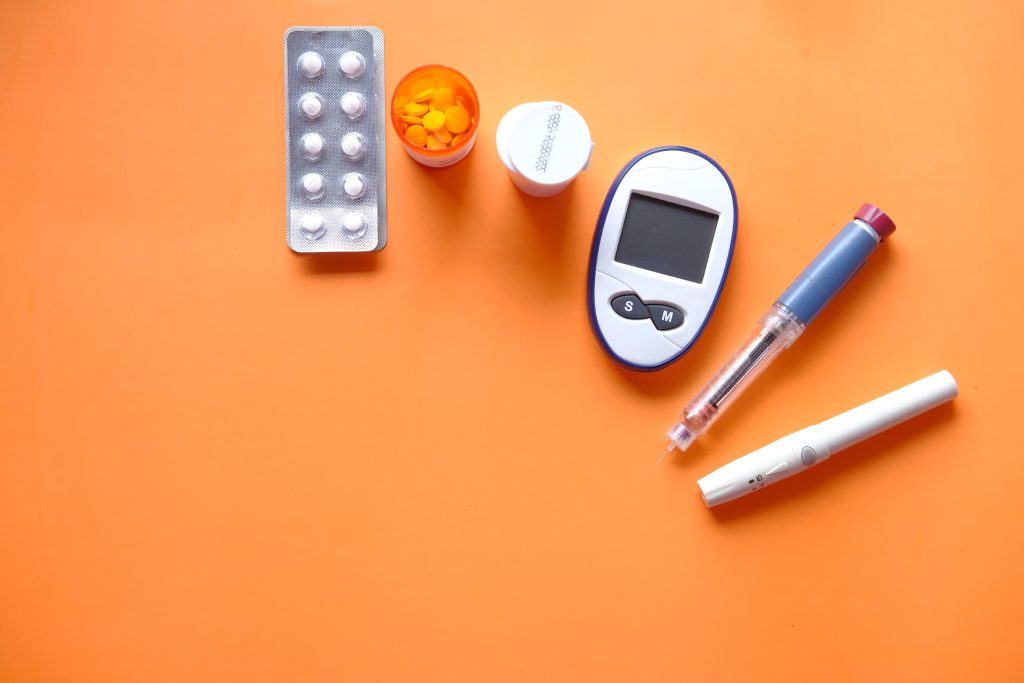Are Humalog and Novolog the same?
Humalog and Novolog are two different rapid acting insulin injection formulations used to help manage blood sugar in people with type 1 and type 2 diabetes. While similar, they are not directly interchangeable, and therefore they are not the same. There are a few key differences between the two, such as how quickly they take action, and who is prescribed which drug.
Novolog is known to work slightly more quickly, and can be injected just five to ten minutes before a meal. Humalog should be injected 15 minutes before a meal. Novolog can be used by adults and children over the age of 2 with either type 1 or type 2 diabetes. Humalog has not been studied in humans under the age of 3, and is typically prescribed more to adults and most children with type 1 diabetes. Adults with type 2 diabetes are sometimes prescribed Humalog as well.
What is Humalog?
Humalog is a rapid acting insulin analog used to treat type 1 and type 2 diabetes by helping maintain blood sugar levels, approved by the FDA in 1996. Its generic name is insulin lispro. Humalog is identical to human insulin and has a similar chemical structure as well.
What is Novolog?
Novolog is another rapid acting insulin analog that was approved by the FDA in 2000. It is chemically similar to the insulin already produced by the human body, except it has aspartic acid instead of a proline amino acid in part of its DNA structure, giving it the generic name insulin aspart. It is also used to regulate blood sugar levels in patients with type 1 and type 2 diabetes.
Dosages:
Humalog comes as a solution for injection under the skin in a few different preparations including 3 ml cartridges, 3 ml prefilled KwikPens, 3 ml vials, and 10 ml vials. All formulations of Humalog contain 100 units/mL (U-100) of insulin except for Humalog KwikPen, which also comes in a 200 units/mL (U-200) version.
Novolog is available as a solution for injection under the skin in a similar variety of preparations such as the 3 ml cartridge (known as PenFill), prefilled pens (Novolog FlexPen, Novolog FlexTouch), and 10 ml vials. These formulations contain 100 units/mL of insulin aspart.

Side effects:
The most common side effect for Humalog and Novolog is low blood sugar – while it is important to keep your blood sugar low if you are diabetic, it is also important to consistently monitor your blood sugar levels and ensure they do not get too low.
Other common side effects may include:
- Diarrhea
- Nausea
- Headaches
- Weight gain
More serious side effects may occur as well, such as:
- Reaction at the injection site
- Heart disease
- Low blood potassium levels
- Allergic reactions (hives, itching, wheezing, difficulty breathing, facial swelling)
- Fluid retention and swelling
Brand name vs Generics:
Generic medications have a few defining characteristics when compared to brand name: they have chemically identical active ingredient(s), they are available in the same strength and dosage form and produce the same efficacy, and they are typically sold much at much cheaper prices than their brand name counterparts. By definition, there are currently no true generic versions of Humalog or Novolog (or any insulin products) available at this time.
The closest thing to ‘generic insulin’ would be something called biosimilar insulin. Biosimilar insulin is developed and rigorously tested to be as close as possible to brand name insulin in safety, efficacy, and quality, but since it is not an exact copy, it can not be considered generic. Generic products are identical copies of the original brand name drugs, while biosimilars are highly similar but not exact identical copies of the brand name drug. Although it is not technically considered a generic version, biosimilar insulin is similar to most generics in that it can be offered as a more cost effective option in some cases.
Medication Costs:
Insulin costs can be high even with insurance, and with no true generics available, this can easily create a financial burden for people with diabetes. However, the new $35 insulin price cap has made these medications more affordable for many. The price cap applies to both private insurance plans and Medicare Part D plans, and it limits the cost of a 30 day supply of insulin to $35 per month.
There are still a few limitations to consider – not all insurance plans are required to participate in the price cap program. Another important note: while Humalog and Novolog are covered, the price cap specifically only applies to a 30 day supply of certain types of insulin, not all of them. Despite these limitations, the $35 insulin price cap is definitely a step in the right direction towards making life saving medication more accessible and affordable.
To check how much these medications would be with your insurance use eNavvi.
Disclaimer
The information included in this page is not a substitute for medical advice. The list of side effects may not include all side effects as drugs can affect all people differently. Any dosage information may not include all dosage information. It is important to discuss with a medical professional that knows your medical history well which dosage is right for you and if there are any potential risks or possible side effects. Our goal is to provide relevant information but this page may not include all up-to-date information.